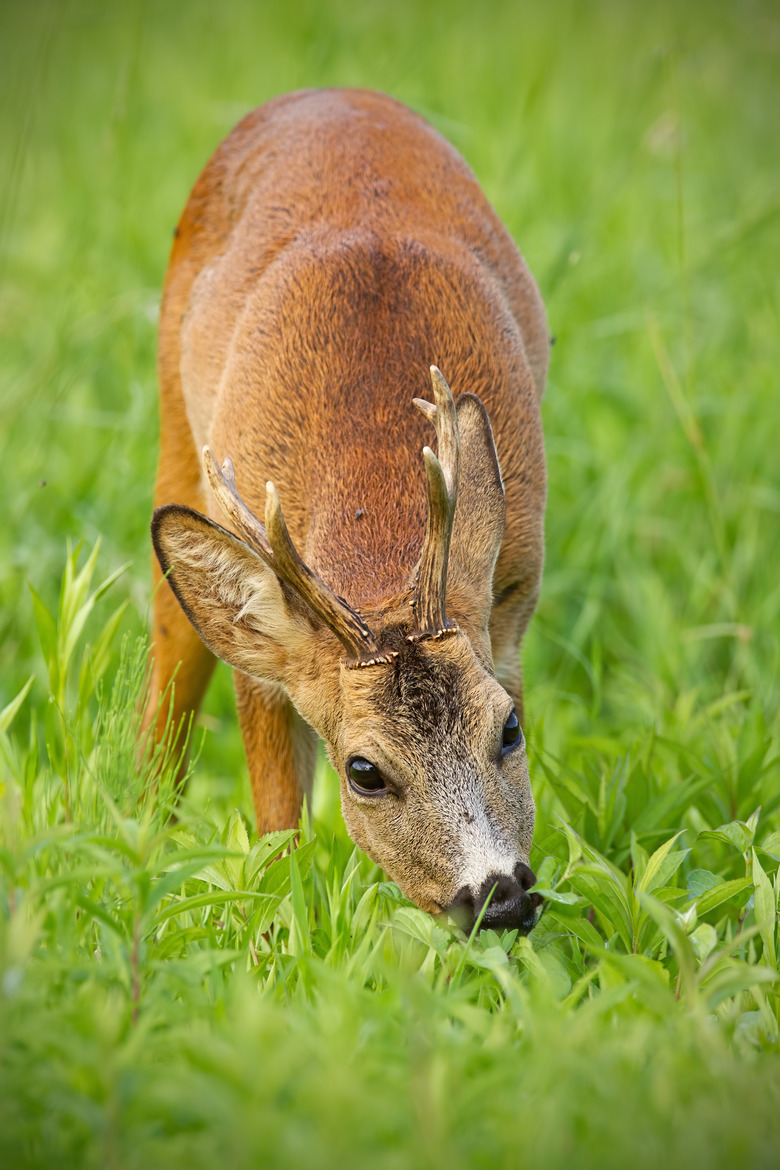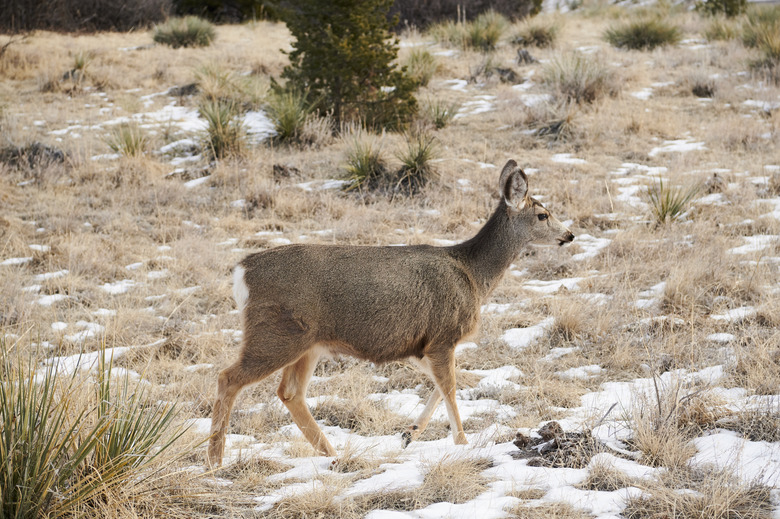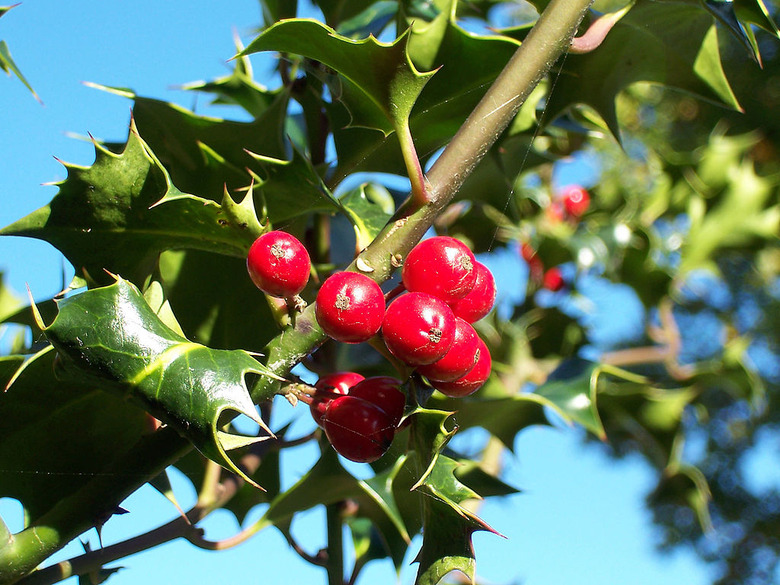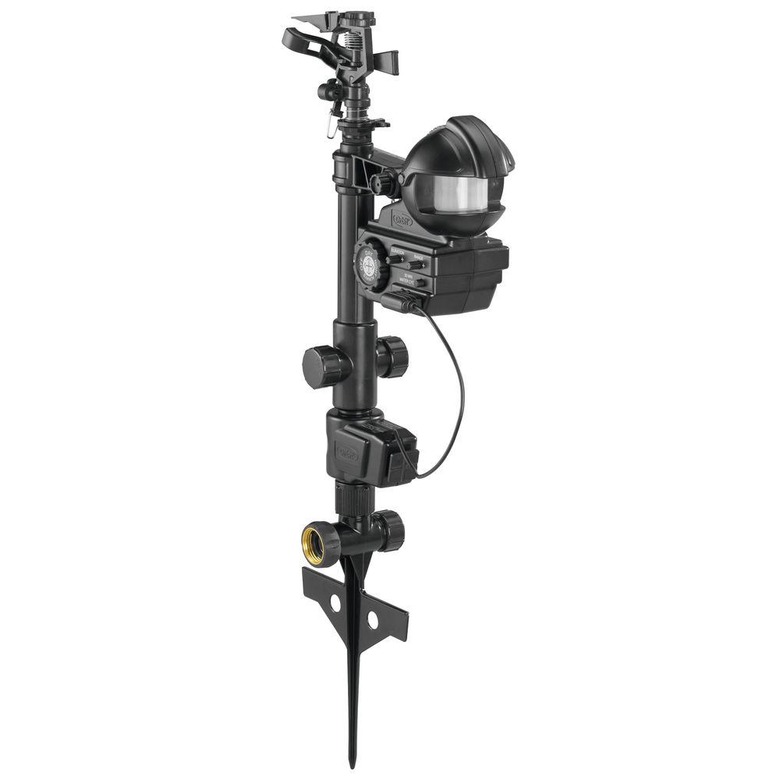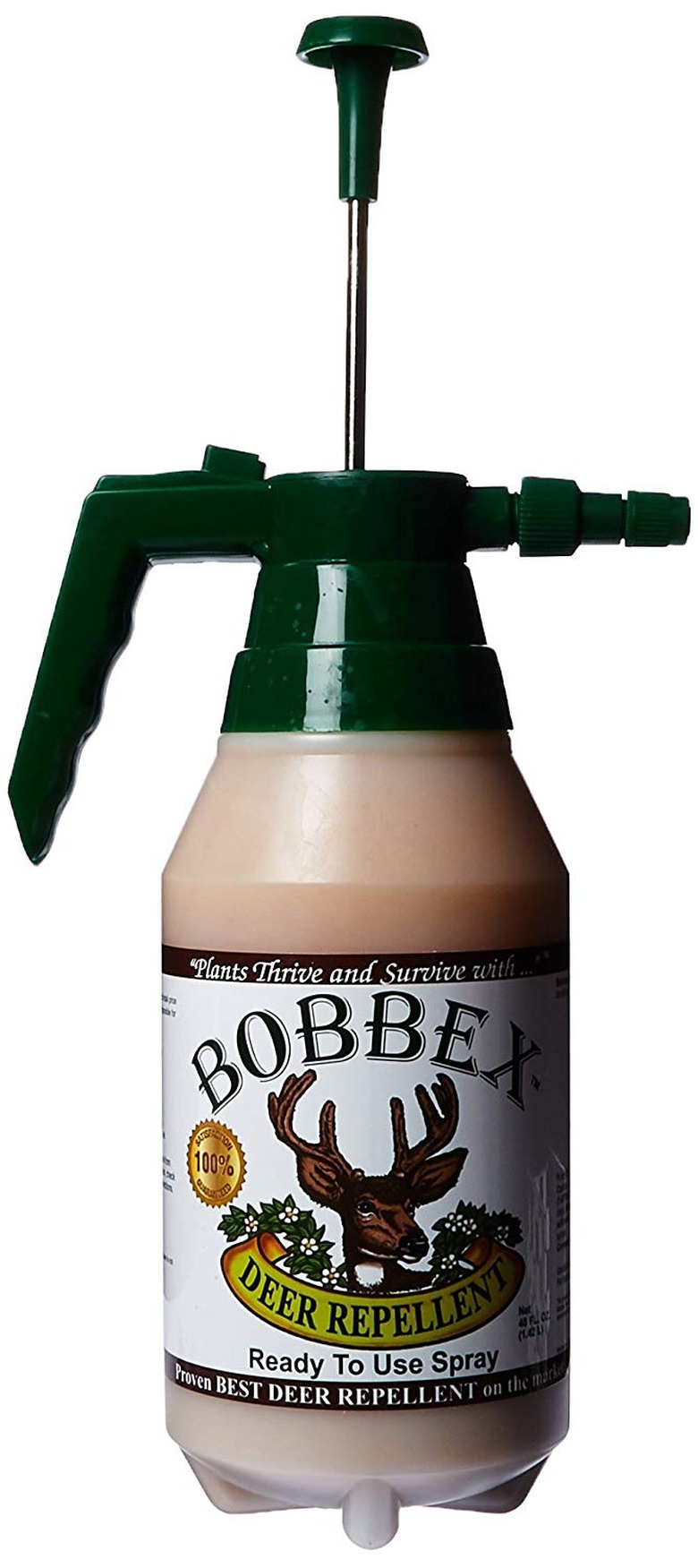How To Keep Deer Out Of Your Yard And Garden
Deer are beautiful, sentient animals that have every right to coexist with humans. At the same time, they can be a lot like boorish, uninvited guests who stay up too late and raid the kitchen whenever you're not looking. (And they always seem to go for the good stuff.) On top of their persistence and piggishness, deer also seem to be quite a bit smarter and braver than most people give them credit for—which may be the main reasons why deer-proofing tactics tend to fail over time. The bottom line is, if your methods are anything short of a tall fence, you'll probably need more than one method. And you'll need to mix it up now and then because, sooner or later, those hungry critters will get wise to you.
There a dozens and dozens of humane, if sometimes odd, methods to keeping deer away, from mounting plastic owls on posts to peeing in your own yard. But most techniques fall into one of four categories: fencing, deer-resistant plants, spooking, and repellents. The order of that list also represents the general ranking, from most to least effective, as well as from lowest-maintenance to highest-maintenance.
Keep Deer Out of Your Yard and Garden: Fence Them Out
Keep Deer Out of Your Yard and Garden: Fence Them Out
By far the most effective way to protect your plants from deer is to put up a good, tall fence. Almost any type of fence will do, but it should be 8 feet tall because deer can actually hurdle a standard 6-foot fence. Unfortunately, this can be a problem for homes in developed areas, because most cities and HOAs restrict fence height to 6 feet. However, you may be able to extend a standard fence by a couple of feet if you use see-through material, such as wire mesh. (Check to make sure this is allowed.)
Homeowners in rural areas have been known to use electric fencing to keep out deer. This can be a simple three-wire setup with metal posts and a solar or battery power source. It doesn't have to be 8 feet tall because the deer will stay away from it after the initial (painful) introduction to the electrified wires. Of course, electric fencing is not suitable for populated areas or around children.
For a deer fence to be truly effective it must be continuous—no gaps—but there are some ways you can mix things up so your backyard doesn't look like prison yard. Deer don't like to climb over large rocks, for example. A barrier of boulders that's at least 8 feet wide is an effective obstacle. They also won't jump into small fenced-in areas, for fear of being trapped. For this reason, two rows of fencing—about 4 or 5 feet tall—spaced about 5 or 6 feet apart—can be just as effective as a single tall fence. You can also make fencing more attractive by erecting a tall wire fence (which is less visible) directly behind a lower, decorative fence, such a picket or split-rail fence.
Keep Deer Out of Your Yard and Garden: Grow Plants They Don’t Like
Keep Deer Out of Your Yard and Garden: Grow Plants They Don't Like
To be clear, deer-resistant plants probably won't prevent deer from coming into your yard and sniffing around your garden (at least initially), but the right plants are less likely to be eaten. There are many plants designated as deer-resistant in most of the plant categories—vegetables, perennials, grasses, herbs, trees and shrubs, etc.—but not all plants are suitable for all areas. Deer-resistance also can be relative. Deer are much less finicky about what they eat when they're starving or when alternative food is limited.
The best way to learn about specific plant species and varieties that both thrive in your area and are reliably distasteful to deer is to contact the nearest local extension service. Many universities, as well as some towns and counties, have extensions offering expert information for free.
In general, deer tend to stay away from plants that aren't fun to eat, including:
- Prickly or thorny plants, such as holly or Oregon grape
- Fuzzy plants, like lamb's ear
- Strong-smelling plants, including lavender, peony and sage
- Toxic plants, such as daffodil, poppy, spurge and oleander
Keep Deer Out of Your Yard and Garden: Spook Them
Keep Deer Out of Your Yard and Garden: Spook Them
Deer seem to understand the old expression about "fool me once..." because they quickly learn to tell the difference between real and phony threats. Static, inanimate deterrents tend to be the least effective, so it's not worth bothering with things such as fake owls, scarecrows and coyote silhouettes. What does spook deer are things that move or come at them, such as dogs and sprinklers.
- Dogs: Dogs that chase deer are excellent deterrents, but they're effective only when they're outside and on watch. Since most dog owners today would sooner sleep outside themselves than keep their dogs out all night, this is an effective solution only during the day and only during reasonably good weather.
- Sprinklers: Motion-activated sprinklers work well when they have complete coverage of the protected area and when they actually detect intruders. For best results, it's good to have multiple sprinklers that spray from different directions and have overlapping fields of detection. Sprinklers also must be able to "see" in the dark to spook nighttime visitors. However, if you live in a cold climate and have a deer problem in winter, sprinklers aren't a viable option.
- Light: Deer will spook from sudden bursts of bright light, such as from a motion-activated security light. Security flood lights are relatively easy to install and economical to operate, since they turn on only when they detect motion, and they turn off automatically after a couple of minutes. They also work in all weather and require no monitoring (you can leave the lights activated when you go on vacation—something you should not do with sprinklers). On the downside, lights, unlike dogs, work only at night.
Keep Deer Out of Your Yard and Garden: Repel Them
Keep Deer Out of Your Yard and Garden: Repel Them
Like most animals, deer have sensitive sniffers and are put off by certain strong odors, namely garlic, eggs, soap and even blood. They also are put off by materials with powerful flavors, such as cayenne pepper. Not surprisingly, commercial deer repellent sprays contain just these types of ingredients. And many actually smell equally bad to humans. Repellents work best when they are applied directly to plants, and they must be reapplied regularly and after any rains.
The reapplication is where most people fail with repellents. Their effectiveness wears off with time, so they simply do not work if you apply them too infrequently. In other words, this is a high-maintenance approach to deterring deer. But it does work if you do it strictly. It's best if you set an alarm to remind yourself to reapply the spray, following the manufacturer's recommended schedule.
In addition to sprays, there are deer repellent products that you can hang from trees or shrubs, clip onto plant stems or stab into the ground. These use the same types of natural odor and taste sources as spray repellents but are designed to be atmospheric, as opposed to direct application onto plants. Reviews of their effectiveness are mixed, as with many deer deterrents. If there's a special plant that you'd be crushed to lose to deer, a direct-spray is a safer bet.
